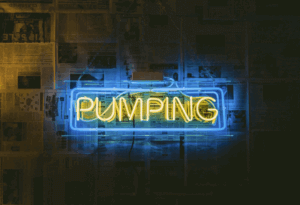Sump Pump 101: What You Need to Know Before Buying a New Sump Pump

If your home has a basement, it is critical that you make sure that you keep moisture out.
A wet basement can cause mold, mildew, rust, and poor indoor air quality. If left alone for long enough, this can come to pose a serious health risk for everyone in the home.
And that’s just a best-case scenario. Summertime means heavy rains in many areas, and these can lead to disastrous basement flooding.
The cost to pump out, thoroughly dry, and repair a flooded basement can cost$500-$1,500 on the low end, and several thousand more depending on the extent of the damage.
As the numbers show, keeping water out of your basement is a serious priority. Despite that, the American Society of Home Inspectors reports that some 60% of homeowners deal with below-ground moisture problems. And if you are among that 60%, this might mean you need a new sump pump.
What is a Sump Pump?
A sump pump is a pump installed in a building’s basement or crawlspace to pump moisture out and away from the foundation. They are built into the lowest-lying parts of these areas and are often situated in a specially dug sump pit to collect as much water as possible.
Water flows into the pits either through drains or through natural water migration, and the pump safely away.
Sump Pumps have been common for some time, and are especially common in low-lying regions where heavy rains are an issue, as well as cold regions where melting snow can flood basements and crawlspaces.
Do You Need a New Sump Pump?
A number of laws, most notably amendments to the U.S. Federal Clean Water Act made in 1987, have made sump pumps a required feature in the construction of many new homes. So if you live in a home built after that year, there’s a good chance your home already has a sump pump. If you’re experiencing problems basement moisture, however, it could be time for a replacement.
If you live in an older home, the odds increase that your property either doesn’t have one or it is due to be repaired or replaced. Again, if you frequently have to deal with moisture in your basement, it probably means that you need a new pump.
What Type of Sump Pump Should I Get?
There are two common types of sump pump: submersible pumps and pedestal pumps.
While both will keep your basement dry, they each have their own perks and drawbacks.
Submersible Pumps
True to the name, submersible pumps are put underwater in your sump basin. The basin can then be sealed over the pump.
The benefit to this is that the pump is out-of-the-way, making it less obtrusive and quieter when it’s running. It’s also safer if you have small children in the home, and is ideal for a finished basement. The drawback is that they can be less economical, and are more difficult to perform maintenance and repairs on.
Pedestal Pumps
Pedestal pumps only allow the pump itself to rest in the basin, keeping the motor above the waterline.
They tend to be cheaper than submersible models and allow easy access to the motor for repairs. They’re also ideal if you happen to have a smaller basin which may not fit a submersible model.
The main drawback is the back that having an exposed motor is noisy, would be an eyesore in a finished basement, and a potential hazard to small children.
Don’t Wait Until the Damage is Done
If you already have a sump pump and basement moisture hasn’t been an issue for you, then odds are you’re already in good shape.
But if your current system doesn’t seem to be up to par and you’re considering investing in a new sump pump, remember to weigh that investment against the potential cost of a flooded basement. The summer rains will be here before you know it, and you’d hate to look back with regret.
Be sure to check out our other articles for tips on maintaining your home’s plumbing and for inspiration on your next remodel project.



